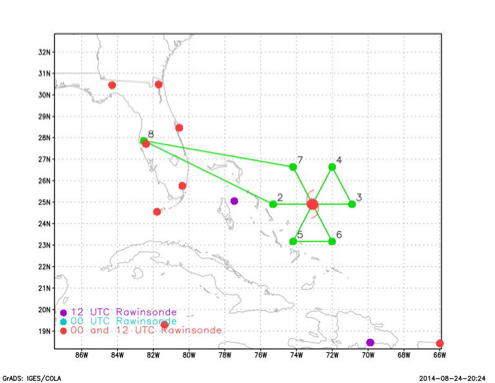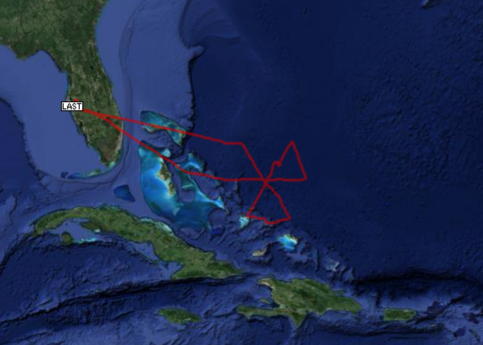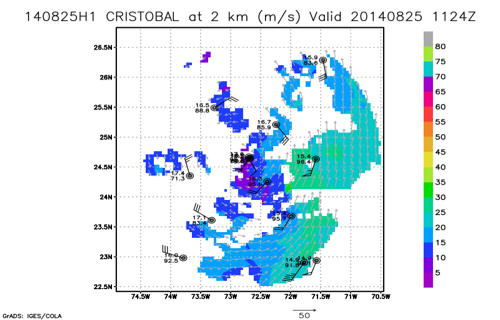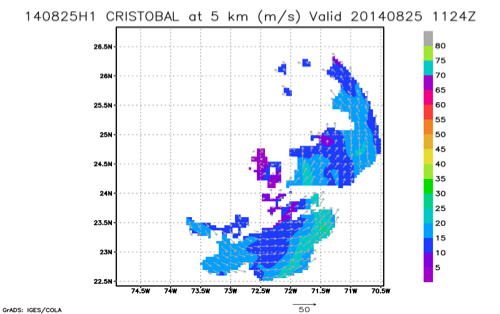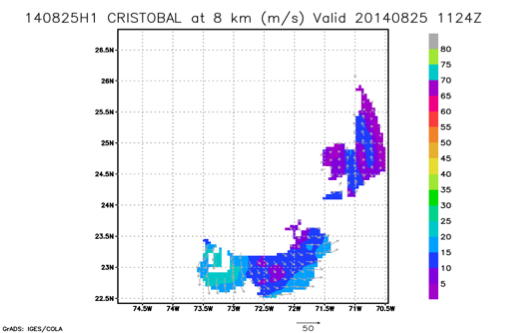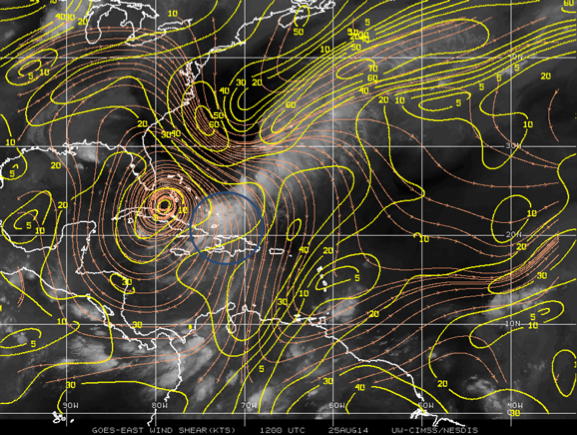
Figure 1: Environmental shear analysis at 1200 UTC on
August 25, 2014 from the Cooperative Institute for
Meteorological Satellite Studies (CIMSS) product. The
blue circle indicates the storm location.
|
The goal of this mission is to conduct an EMC-tasked TDR pattern in Tropical
Storm Cristobal. The system was declared a tropical storm 1 day earlier, and
it still has a diffuse circulation based on previous reconnaissance reports.
Before taking off, Cristobal is a sheared storm with all of the associated
convection located over the southeastern portion of the circulation. Deep
convection has formed a little closer to the center. The Air Force Reserve
aircraft before our mission measured 850 mb flight-level winds of 55kt and
SFMR winds of ~ 45 kt. The environment was not favorable for development
before the flight with ~20 kt north to northwesterly vertical wind shear
(Fig. 1). The north to northwesterly vertical wind shear is forecast to
decrease during our flight, which allows a more favorable environment for
strengthening of Cristobal. The storm has a slow northward motion of ~3 kt
and is expected to move north-northeastward. From the IR satellite image it
appears that the storm is connected with a frontal zone north and northeast of
the storm (Fig. 2). The intensity forecast guidance suggests slowly and
steadily intensify, reaching hurricane strength within 60-72 h.
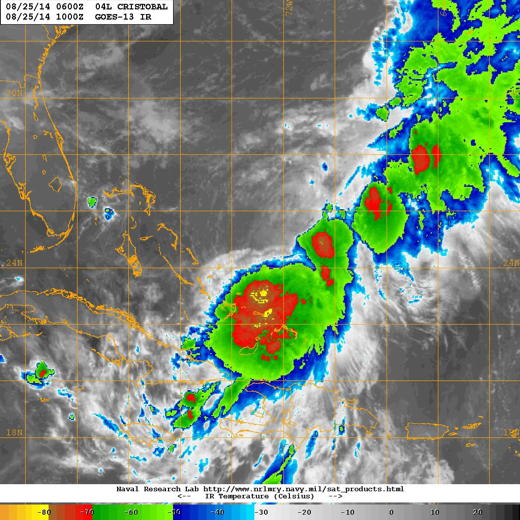
Figure 2: Infrared satellite image from GOES-13 taken
between 6-12 Z on August 25, 2014.
|
The plan calls for a butterfly TDR pattern, with an initial point on the west
side (Fig. 3a). The legs will be 120 nm in length. Dropsondes at the turn,
mid, and center points. No AXBT's will be deployed. The pattern will be
flown at 10,000 ft.
Mission Summary :
| Take off
| Landing
| MacDill AFB, FL
| 05:56 UTC
| MacDill AFB, FL
| 13:35 UTC
| |
The actual flight track in shown in Fig. 3b. Takeoff was at 0555 UTC from
Tampa. The winds at flight level showed a broad circulation, with peak winds
of ~65 kt on the southeast side of the storm where SRMF winds of 51 kt. The
center pressure remained ~993 mb during the flight. Aircraft fixes suggest
that the storm motion speed is ~4 kt with motion direction of 20 degree.
Real-time Doppler radar analyses (Fig. 4) showed that the circulation was
displaced about 30-50 km between 2 and 5 km altitude. The wind field at 8 km
shows limited data coverage indicting the vortex of Cristobal is shallow. The
storm slowly intensified during the mission. Near the end of the flight,
Cristobal was upgraded to a 65-kt hurricane although the cloud pattern of this
system does not resemble that of a hurricane. The aircraft landed at Tampa at
1335 UTC. 17 sondes were launched and transmitted.
Mission Evaluation :
A total of three radar analyses were created and transmitted in real time, as
well as 17 dropsondes. There were problems with TDR recording and the AOC
ground server at the beginning about the flight. The problems were fixed
during the flight so that transmissions of radar analyses and dropsondes in
real-time were successful.
Problems :
The primary problem with this flight was the failure of the TDR data recording
and the primary ground server at AOC. However, these problems were fixed
during the flight.
Jun Zhang
Nov. 6, 2014
Mission Data :
Lead Project Scientist form |
Radar scientist form |
Dropsonde scientist form
serial data |
Flight Director's manifest |
Flight Director's log
Page last updated November 17, 2014
Return to Mission page.

